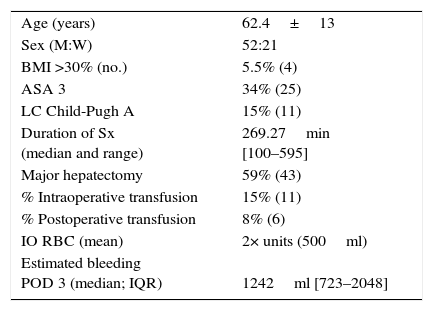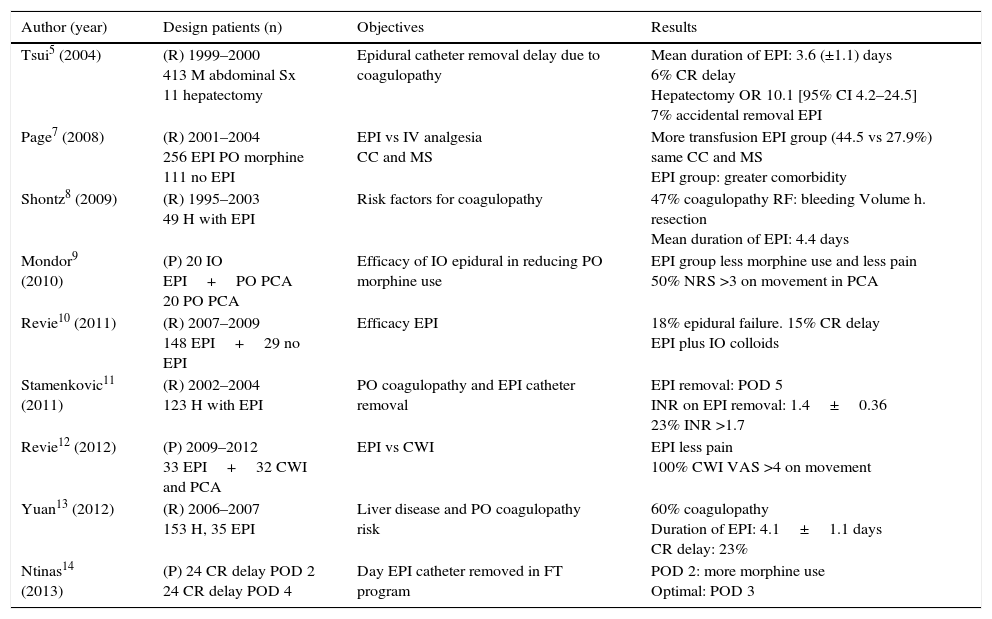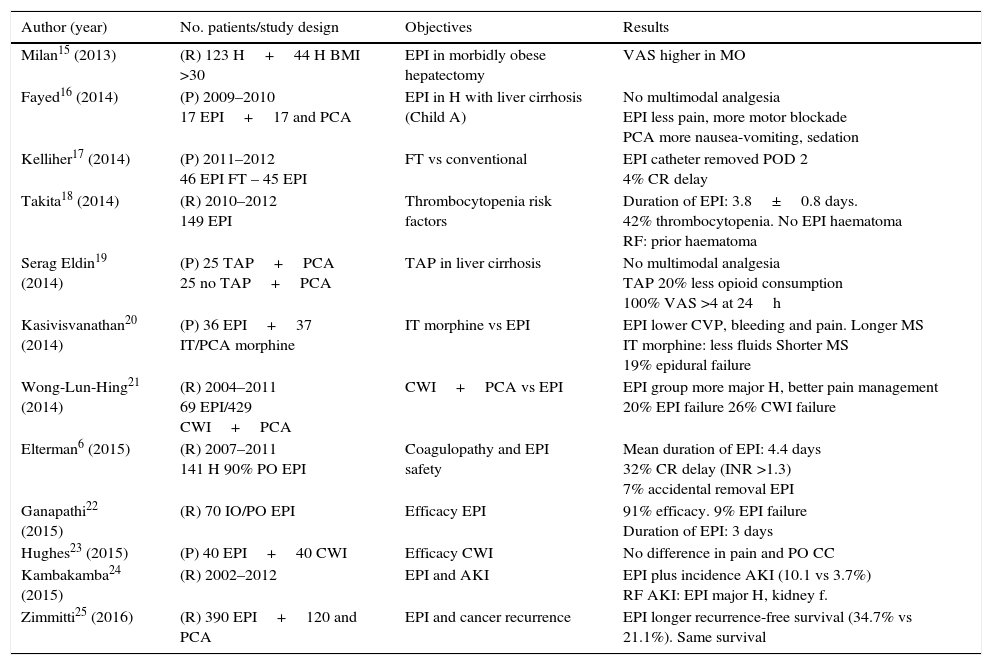Perioperative epidural analgesia in liver resection provides optimal dynamic pain relief. Coagulation disorders occurring in the postoperative period can lead to greater risk of complications during epidural catheter removal.
The aim of this study is to evaluate the effectiveness and complications of epidural analgesia and delayed epidural catheter removal due to postoperative coagulopathy.
MethodsA retrospective study of 114 patients undergoing open liver resection and epidural analgesia, from March 2012 to February 2015. Postoperative course of pain intensity, coagulation parameters and delayed catheter removal was analysed.
ResultsOf the 114 operated patients, 73 met the inclusion criteria. 59% of patients received major hepatectomy (resection ≥3 segments) and 15% had Child's Class A cirrhosis (11/73). 96% of catheters functioned properly. 89% of patients had controlled pain (numerical rate scale <3) at rest and 8.2% (6 patients) had severe pain (numerical rate scale >6) with movement.
The INR peaked on postoperative day 2, 1.41 [0.99–2.30], and gradually returned to normal values in most patients by postoperative day 4, 1.26 [0.90–2.20]. The catheters were left in place 3.6 (±1.1) days. In 6 patients (8%), catheter removal was postponed due to coagulation disorders.
ConclusionsEpidural analgesia for liver resection was a safe practice, which produced optimal control of postoperative pain. The percentage of delayed catheter removal due to postoperative coagulopathy was low, not requiring transfusion of blood products.
La analgesia epidural perioperatoria (AE) en la cirugía hepática proporciona una analgesia dinámica óptima. Las alteraciones de la coagulación que se producen en el postoperatorio, añaden un riesgo de complicaciones tras la retirada de los catéteres epidurales.
El objetivo de este estudio es evaluar la efectividad y las complicaciones de la AE, así como el retraso en la retirada de los catéteres epidurales asociado a coagulopatía postoperatoria.
MétodosEstudio retrospectivo de los 114 pacientes sometidos a cirugía hepática abierta y AE, de marzo 2012 a febrero 2015. Se analizó la evolución postoperatoria de la intensidad del dolor, de los parámetros de la coagulación y la retirada aplazada de catéteres.
ResultadosDe los 114 pacientes intervenidos, 73 cumplieron criterios de inclusión. Un 59% de pacientes con hepatectomía mayor (resección≥3 segmentos) y un 15% con cirrosis hepática Child A (11/73). El 96% de los catéteres funcionaron adecuadamente. Un 89% de los pacientes tuvo dolor controlado (escala numérica<3) en reposo y un 8,2% (6 pacientes) presentaron dolor intenso (escala numérica>6) al movimiento.
El INR se incrementó en el 2.° día postoperatorio, 1,41 [0,99-2,30], normalizándose en la mayoría de los pacientes al 3.er día postoperatorio, 1,26 [0,90-2,20]. El tiempo medio de permanencia del catéter fue de 3,6 (±1,1) días. En 6 pacientes (8%), se aplazó la retirada por alteraciones de la coagulación.
ConclusionesLa AE en la hepatectomía resultó una práctica segura, que produjo un óptimo control del dolor postoperatorio. El porcentaje de retiradas aplazadas de catéter por coagulopatía postoperatoria fue bajo, no requiriendo trasfusión de hemoderivados.














